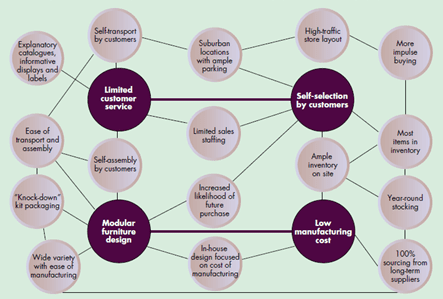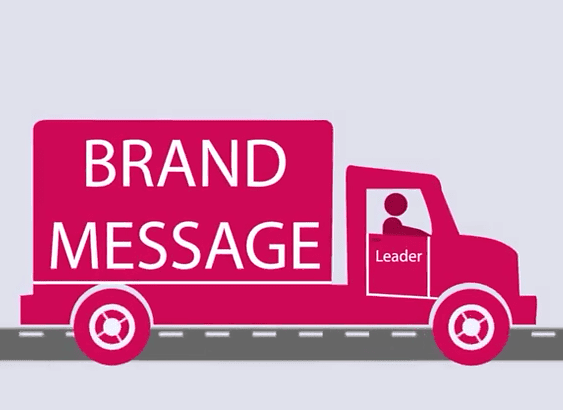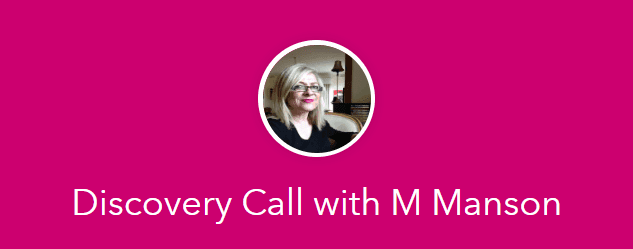 THE ESSENCE OF GOOD STRATEGY IS TO KNOW WHAT YOU ARE FIGHTING FOR AND WHY. ONLY THEN YOU WILL BE ABLE TO LEAD A COMMITTED ARMY TO WIN! … AND NOT JUST ONE BATTLE, BUT THE WAR.
THE ESSENCE OF GOOD STRATEGY IS TO KNOW WHAT YOU ARE FIGHTING FOR AND WHY. ONLY THEN YOU WILL BE ABLE TO LEAD A COMMITTED ARMY TO WIN! … AND NOT JUST ONE BATTLE, BUT THE WAR.
Having a Competitive Strategy means to define, design, deliver and defend an organisation’s Competitive Positioning through differentiation in activities to gain an advantage. The outcome is a system of self-correcting behaviours that drive these activities, shortening the distance between the CEO and the frontline. Establishing a Competitive Positioning requires vision and courage to deliberately choose to perform activities differently than rivals do or to perform different activities to the norm.
“A company can outperform rivals only if it can establish a difference that it can preserve.” Michael Porter
But the old traditional approach to strategy and management still prevail and result in six reasons why most strategies fail to deliver consistent, lasting results.
1. Chicken S**t Compromise Excuse For A Vision And Mission
Aim for the stars and you may land on the Moon. What team goes out on a field not motivated to win? Not going all out for victory means that a company will inevitably fail to make the tough choices and the significant investments that would make winning even a remote possibility. Deep insight into the resources and situation is essential but it will not replace courage and Vision.
On May 25, 1961 J.F. Kennedy committed the country to the dramatic and ambitious Mission of “landing an American safely on the Moon and returning him safely to the earth before the end of the decade”. He made it a public commitment, mobilising the imagination and efforts of the entire nation; not for any rational reason of material rewards but by providing an emotional reason of competing ideologies: “the right of a free man to be in space”.
This kind of commitment and leadership cannot fail and it is only possible if an organisation has a clear Vision. The key task of a Leader is to provide and evangelise such Vision. Visionary leaders throughout history have done it, mobilising people to achieve the impossible.
“If you don’t know where you are going, every road will get you there” Alice in Wonderland, Lewis Carroll
2. Trade-Offs: Courage To Make Tough Choices
 The reverse and therefore equally important side of the coin of a successful strategy is to decide on “trade-offs”, i.e. activities the organisation will NOT DO.
The reverse and therefore equally important side of the coin of a successful strategy is to decide on “trade-offs”, i.e. activities the organisation will NOT DO.
In their latest book, ‘Playing to Win: How Strategy Really Works’, A.G. Lafley and Roger Martin conclude that Bosses fail for many different reasons but most are brought down by making a strategic error.
The acclaimed authors list six common strategic errors. There is the Do-It-All strategy, shorthand for failing to make real choices about priorities. The Don Quixote strategy unwisely attacks the company’s strongest competitor first. The Waterloo strategy pursues war on too many fronts at once. The Something-For-Everyone tries to capture every sort of customer at once, rather than prioritising. The Programme-Of-The-Month eschews distinctiveness for whatever strategy is currently fashionable in an industry (I call it ideé du jour). The Dreams-That-Never-Come-True strategy never translates ambitious mission statements into clear choices about which markets to compete in and how to win in them.
I disagree with the Masters. There is only one real mistake and that is not making hard, Non-Negotiable choices that are based on a system of differentiating activities that are constantly defended and reinforced by a system of self-correcting behaviours which enable an organisation to adapt continuously and fast.
Typical strategic plans have too many goals and objectives, rather than a strategic focus around a handful of differentiating activities. The plans are either too broad, “develop x number of new and innovative products” or either have too much detail, becoming too prescriptive and limit creative freedom within clear guidelines.
“Chicken Caesar Salad”: I have quoted this example before. It clearly demonstrates how the clarity of activities and trade-offs allows making better decisions across the organisation, reinforcing the Competitive Positioning.
Southwest Airlines defines itself as “THE low-fare airline.” An example of how this guides employee decisions is a case of a marketing executive who approached the CEO with some customer survey data, suggesting that Southwest should add a chicken Caesar salad to some of their longer flights. The CEO asked, “Will adding a chicken Caesar salad help us be THE low-fare airline in those markets; because, if it won’t, we aren’t serving any damn chicken salad.”
3. Planning for outcomes rather than driving behaviours
Even the greatest success stories don’t last forever if they are not built on a system of self-correcting, culturally driven behaviours, communicated and embedded in the fabric of an organisation, irrespective of the strength of a current leader.
Strategies commonly focus on financial goals and on faceless shareholders. They allocate resources to functions as rigid budgets or ‘projects’, rather than linking these budgets to driving competitive, differentiating activities.
Most people are familiar with a term ‘core capabilities’ or ‘core competencies’ but competencies are static and often do not translate into action. Competencies and capabilities also come and go with employees, equipment and other resources. What makes a difference is how an organisation connects the dots and translates them into activity systems that are unique and hard to imitate by the rivals.
A company can outperform rivals only if it can establish a meaningful difference in activities that it can defend. The continued success of companies like IKEA, Southwest Airlines, and Cirque du Soleil, demonstrates a working model for Competitive Strategies designed around differentiating Activities [see a diagram of IKEA’s strategic activities map below]. These and many more companies have each re-engineered industry-norm activities to create a unique Competitive Positioning around their strongest, most differentiated activities they constantly defend.
Example: IKEA [Source: Michael Porter ‘What is Strategy?’]
In a business environment of constant change and decreasing business life spans, companies with differentiating activity system are going from strength to strength. Start thinking in terms of activities!
InnoFuture has developed a simple Blueprint for designing and implementing a Competitive Strategy around a system of differentiating activities. It provides a clear focus to all parts of the organisation, shortening the distance between the CEO and the frontline, making the organisation agile and highly competitive.
4. Leaders Fail To Communicate Strategic Direction – Any Direction
 When people in an organization deeply understand the sources of its differentiation, they move in the same direction quickly and effectively, learning and improving the processes as they go. And they deliver remarkable performance year after year.
When people in an organization deeply understand the sources of its differentiation, they move in the same direction quickly and effectively, learning and improving the processes as they go. And they deliver remarkable performance year after year.
The major failing of the traditional approach to Strategy is the notion that it is for management only, a “need to know” secret, reinforcing the gap between the egalitarian of strategy and the populist nature of implementation.
Peter Drucker: “It is the definition of a manager that in what he does he takes responsibility for the whole – that, in cutting stone, he ‘builds the cathedral’”.
Michael Porter, another father of strategy, takes this principle even further, demonstrating that the performance results as much as double if the big picture, the strategy, is communicated to all levels of the organisation.
A new ambitious strategy means change. And, 75% of change projects fail or don’t last because they are not underpinned by a system of deeply imbedded, self-correcting behaviours.
Any lasting change begins with a deeply felt desire, based on a strong emotional reason. This reason and the goal must be so strong that it forms a clear picture of a better future. The desired Future becomes Now. A person or an entire organisation begins to act like that image they want to become.
The sharper the Leader’s picture of the future and the better it is communicated to the entire organisation – the faster and more effective the change will be, mobilising people to make the change succeed.
In the age of ubiquitous social media, cheap video, email and many collaboration platforms, there is no excuse NOT to communicate extensively and frequently. Leaders must be heard and seen by their people!
5. Metrics Designed For Reporting Not Driving Success
Metrics are always hard. The reason is that they are traditionally based on navel gazing: percentage increases that are at best arbitrary numbers, tortured historical data and benchmarking rather than delighting the customers through focus on strategic, differentiating activities that create value on both sides, and encouraging and rewarding behaviours that best support and enhance these differentiations.
These metrics are designed for management using carrot and stick to push down these goals; goals, that have little or no emotional connection with the frontline, people who are to deliver these goals.
Setting a new set of metrics for the players, that rewards and nurtures their activities as individuals and as a team, is the key to achieving goals of a Competitive Strategy.
6. Accountability Based On Carrot And Stick Rather Than Culture
Carrot and stick accountability does not build strong, lasting performance. These tools wear out. In contrast, self-correcting behaviours that are culturally driven by an understanding and embracing the winning, differentiating activities ensure success and survival.
Consider an ant colony, where no one is in charge. The fate of the entire colony depends on endless interactions and communication between its individual members. They have a system of signalling common danger, and immediately swarm to protect the colony.
Or, for example, some organisations that have adopted metrics like Net Promoter Score use it to measure and reward customer satisfaction. Often staff promotions for an entire branch may be halted for the following year if it has the lowest score. Wouldn’t this encourage self-corrective behaviours in each team – resulting in a continually improving performance for the whole organisation?
The highest level of performance always comes from people, who are emotionally engaged, and the highest level of engagement comes from knowing the score—i.e. knowing whether one is winning or losing. If people don’t know whether they are winning the game, they are probably on the way to losing.
The best accountability system is created when a team has a common platform to exchange learning and experience. A question, “Did we do what we committed to one another to do?”, when it consistently delivers a ‘yes’, members of a team develop mutual respect and trust or instigate a change from within. When this happens, performance improves dramatically and problems are quickly corrected at the source.
Pay-off
Establishing a System of strategically focused differentiating activities around a few Non-Negotiable Principles will:
- Give all employees freedom and creativity to make right decisions within a clear framework
- Shorten the gap between the CEO/strategy and the frontline improving market response and adaptation
- Create a self-organising business culture: empower people, foster ownership and co-creation, provide focus for improvement and operational excellence with stronger innovation capacity and loyalty
- Deepen the Competitive Advantage improving profits and reducing cost.
Non-Negotiable Principles are the wheels of a Competitive strategy. It is a Management revolution in thinking beyond traditional Strategy process that divides an organisation into deep silos. This system of mutually reinforcing differentiating activities builds a self-correcting culture and a fast adapting, sustainable business.
[custom_button text=”Find out about Non-Negotiable Principles” title=”Find out about Non-Negotiable Principles” url=”https://innofuture.com.au/” size=”x-large” “color:#ccoo66″ text_color=”#FFFFFF” align=”left” target=”_self”]
 Margaret Manson is a marketing communication specialist helping companies build brand leadership through innovative marketing and communication strategy including web and online content development, CRM, and thought leadership development through events and Social Media. She is the Chief Inspirator at InnoFuture.
Margaret Manson is a marketing communication specialist helping companies build brand leadership through innovative marketing and communication strategy including web and online content development, CRM, and thought leadership development through events and Social Media. She is the Chief Inspirator at InnoFuture.
Contact Margaret Manson on 0407 661 130 to find out you can make your business more competitive.



